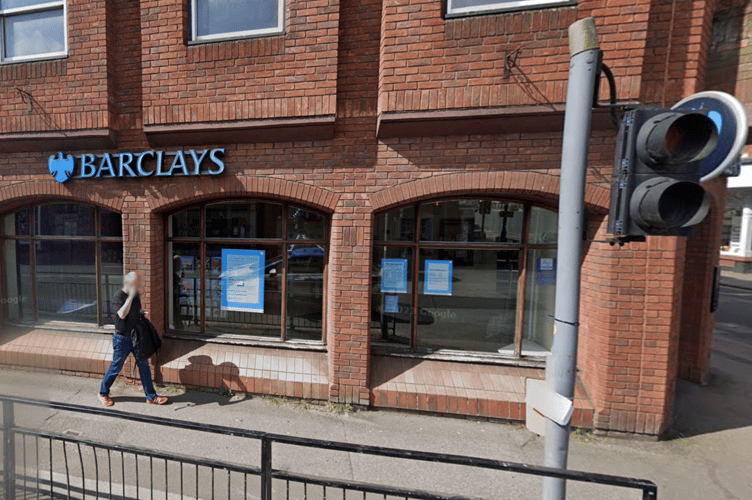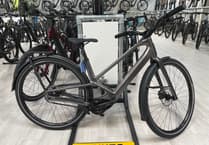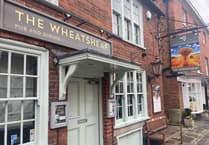The closure of Barclays bank branch in Farnham has been delayed amid fears over the community impact of the planned closure.
Barclays announced last week it plans to close the branch on February 21 next year, citing changing customer habits towards internet and telephone banking.
But after analysis of the closure's potential impact, cash machine provider LINK has now assessed a need for a new 'deposit service' in Farnham.
Barclays has confirmed the Farnham branch will now remain open until the deposit service is live in the community.
"We will of course share any change in the planned closure date with our customers when it becomes available," said a spokesperson.
Deposit services were rolled out at the same time as banking hubs in January 2023 to provide consumers and businesses with convenient and accessible ways to deposit cash without having to visit a bank branch.
Like banking hubs these services are operated by Cash Access UK Ltd, a bank-owned delivery company.
Why is Farnham getting a deposit service?
Under a voluntary agreement with LINK, all major high street banking firms are required to notify the cash machine provider of any planned branch closures.
This is part of a commitment from the firms, supported by major consumer groups, to ensure that no community is left without the cash access and deposit services it needs.
Once LINK has been told about a planned closure, it assesses whether the community’s needs will still be met even after the closure has taken place. If it decides that a new service will be needed, it works with the firms who have signed up to the initiative to provide it.
How does LINK assess a community’s needs?
The first thing LINK looks at is what branches there are in the community? If there is a bank branch, or a branch of Nationwide Building Society, it are unable to recommend a banking hub. In some communities where branches are still available, LINK can still recommend ways to help businesses and consumers deposit their cash.
This is the case in Farnham, where the town will be left with two high street bank branches after Barclays closure; Santander and Nationwide.
If there is no bank branch left, LINK will do an initial ‘fact find’. The larger the community, in terms of the number of residents and shops, the more likely it is to need cash access and deposit services, provided face to face.
There is no hard and fast rule, as other factors matter too, but LINK expects the threshold for needing face to face services within or close to a community to be around a population size of more than 7,000 within 1 km of the centre, and more than 70 local retailers.
The second stage involves a detailed desktop review looking at four factors:
- how close is the nearest neighbouring community with banking facilities. If the community is very close, LINK may consider that the neighbouring community can support the residents’ cash needs. But the further away, the more likely it is to need its own services. It measures the time to travel by bus, given that many people who depend on cash may not have access to a car.
- how levels of financial vulnerability compare with the national average. The more financially vulnerable the community, the more it is likely to need local cash services.
- how levels of digital vulnerability compare with the national average. The more ‘digitally vulnerable’ the population – that is, not using digital services – the more likely they are to need local cash services.
- the proportion of older people (over 65) in the community, compared with the national average. LINK acknowledges that many older people can be less comfortable using (or unable to use) online services, and therefore more likely to need access to face to face basic banking and cash services.
Using a weighted scoring system, LINK then assesses whether the community is likely to need a new service.
The final stage in the process involves a visit to the community to check it has all the facts and to see whether it has missed anything. As well as checking things like bus timetables, LINK will look at whether there are any steep hills or major roads that can make it hard for people to access cash services. Information available online doesn’t always give the full picture.
Following the community visit, LINK may decide that the community’s cash needs will continue to be met. Or we may recommend a new service, which could include a new free-to-use ATM, a service for depositing cash, or a shared banking hub.
The Community Cash Advisory Panel
An independently chaired Community Cash Advisory Panel will scrutinise the assessment approach, the new services identified by LINK and the firms implementation of these new services to check that communities’ needs are being met effectively.




-Andy-Fernandez-(Waverley-Borough-Council)-Surrey.jpeg?width=209&height=140&crop=209:145,smart&quality=75)
Comments
This article has no comments yet. Be the first to leave a comment.